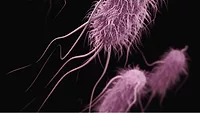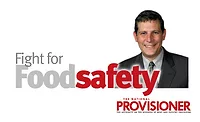Listeria, Salmonella and Escherichia coli: Oh My!

Despite a food manufacturer and retailer’s best efforts, contamination can happen. If your company should get that dreaded phone call, you need to know what to do to overcome your fears and take care of your business and consumers. Your company can survive and thrive, as long as you accurately handle all steps of the recovery process: sending out the initial food recall notice, working with your crisis management team, reevaluating your prevention procedures and recovering your losses.
The Goals of Proper Food Recall Crisis Management
There are three important goals that your company must work toward in the event of a foodborne illness outbreak:
1. Protect consumers. You must do everything reasonably possible to limit the public’s exposure to the contaminated product. Quickly assess the product involved, recall the product, identify the origin and cause of the contamination, and prevent future contamination.
2. Maintain your company’s reputation. Protecting and maintaining the good name, reputation, and viability of your company is second only to ensuring the health and safety of your consumers. You must commit to maintaining customer confidence in your brand both during and after the recall.
3. Recover any losses. For years, food manufacturers suffered all the financial losses related to a food recall. This is no longer necessary. With the right legal counsel by your side, you can recoup the money you lost due to the recall and the fault of others.
All three goals should help determine the actions you take throughout the recall process.
The 10-Step Guide to Managing a Food Recall
When presented with a food contamination incident, you must work closely with your regulatory counsel to determine whether a recall is necessary. If the answer is “yes,” you must work quickly and accurately to address the situation, manage the logistics, create a recall plan and take appropriate precautionary actions to prevent future foodborne illness outbreaks.
1. Meet immediately with your crisis management team. Include on this team your regulatory affairs specialist, director of public relations/communications, director of quality assurance and food safety, sanitation manager, procurement manager, production manager, risk/insurance manager, in-house counsel and appropriate outside counsel and external consultants. This team should be determined as part of crisis management planning, well in advance of any pending crisis.
2. Provide public notice of the issue and recall. To prevent further illness and capture the suspect product, you must determine how wide a net to cast on your recall so consumers know which products to avoid and return. Your recall notice should include detailed product identification information along with a mechanism for concerned individuals to contact your company and return the product.
3. Determine the source and cause of the foodborne illness. You must find the origin and cause of the contamination and related illnesses. You must also determine the best way to isolate and prevent that cause as you do not want to have the same issue happen again. While the regulatory officials will investigate the contamination incident, you must conduct your own investigation with the assistance of outside counsel and outside consultants. This is necessary in order to keep and maintain the critical work product and attorney-client privileges.
4. Collect all contracts and indemnification agreements related to the ingredient and product suppliers. This documentation will become integral to any legal action stemming from the contamination, as well as to planning how your company will move forward after the incident is closed. As part of your Hazard Analysis and Critical Control Points (HACCP) plan, you should already have the agreed upon purity and quality assurance standards and continuing food guaranties signed by your suppliers. The government investigators will inquire about this paperwork and you should present it to prevent the assessment of any penalties under the Federal Food, Drug and Cosmetic Act.
5. Notify the appropriate suppliers in the food chain. Sometimes you will not know exactly what the contaminant is or where it came from. In that case, you must notify all potential suppliers and transporters along the distribution chain to preserve your claims.
6. Collect, preserve and test food samples. Create a plan for which product and ingredients to collect, keep, test and ultimately destroy. Keep detailed records and identify where and how long you will store your samples.
7. Notify your insurance carriers and collect and document your financial costs and losses. In order to fully collect your losses, immediately begin keeping records of lost sales as well as the time spent and costs incurred while dealing with all of the necessary tasks to notify consumers and collect, test, store and ultimately destroy the product pursuant to regulatory requirements.
8. Review your HACCP Plan, Good Manufacturing Processes, Standard Operating Procedures (SOPs), Sanitation SOPs and Supplier Audits. You may need to review one or all of these based on the source and cause of the contamination. In many cases, you may find that your issue is not with the procedures themselves but with the suppliers’ handling of those procedures or the fault of other parties. During this process, work with your outside counsel to maintain your attorney-client and work product privileges.
9. Coordinate legal actions. You will need to coordinate both the defense of the contamination and illness claims, and recovery from your insurance carriers and against the at-fault suppliers, transporters or other parties. Be sure to hire outside counsel that has experience with both food contamination issues and insurance.
10. After the recall is over, reevaluate your preventions plans and procedures. Review each aspect of these plans and procedures to identify options for tightening up your processes or the processes of suppliers. This will improve avoidance of future contamination and foodborne illnesses. Based on this review, you may have to make the decision to change product ingredients or change suppliers.
Conclusion
Food manufacturers must tread carefully in the wake of a food recall. With this guide in hand, you can do just that. To ensure that you follow all aspects of this process correctly and that your company is well-protected throughout, work with attorneys and consultants who are knowledgeable, responsible and tough enough to handle the situation at hand.
Brent L. Reichert is partner at Robins Kaplan LLP and has more than 30 years of experience handling complex litigation, including cases of food contamination, recalls and the recovery of costs and losses caused by food contamination outbreaks.
Looking for quick answers on food safety topics?
Try Ask FSM, our new smart AI search tool.
Ask FSM →






